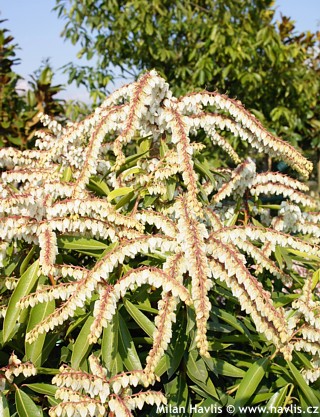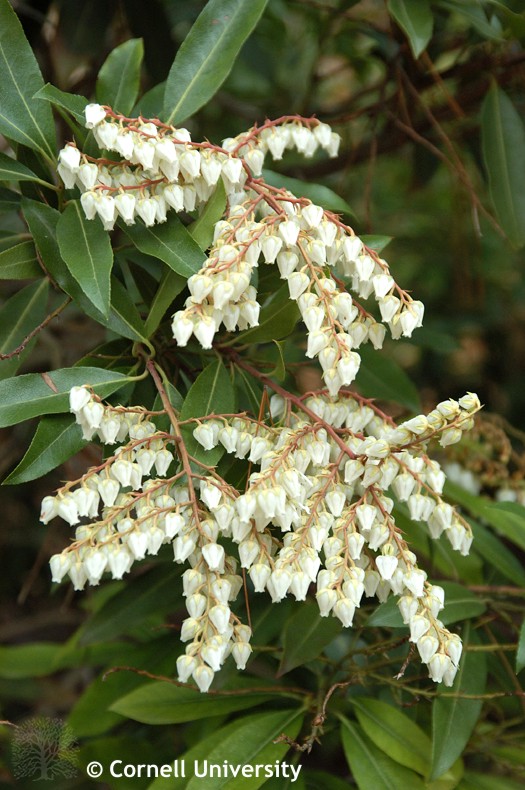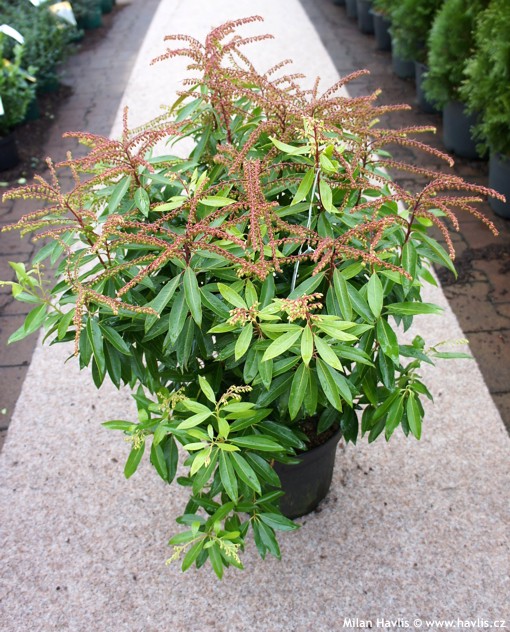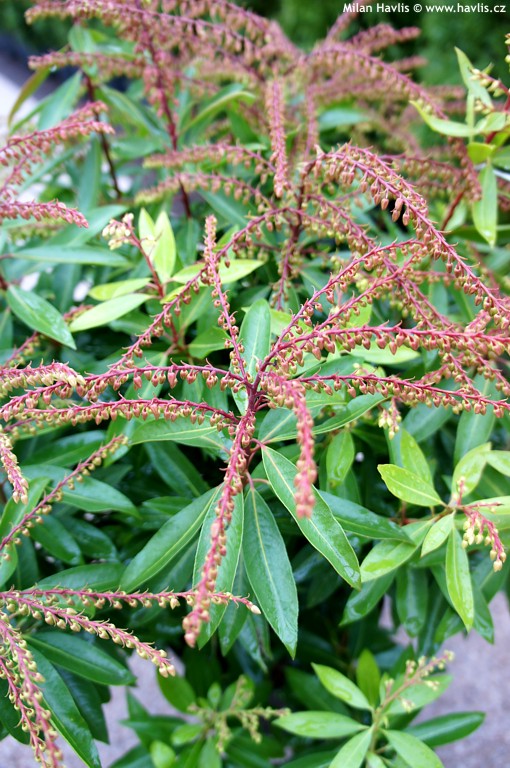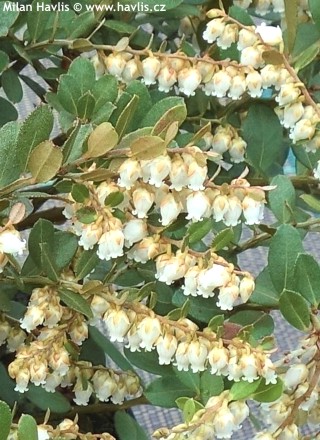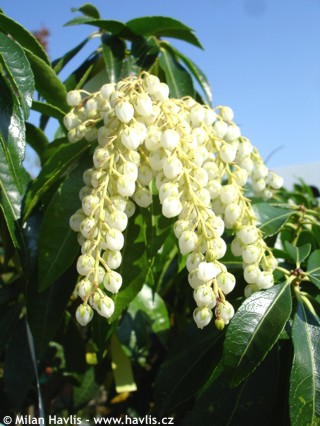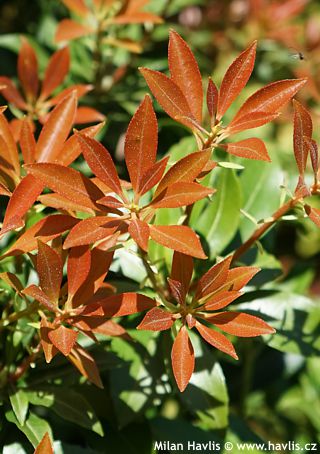Pieris x 'BROUWER'S BEAUTY' lily-of-the-valley shrub
Pieris
Lily-of-the-valley shrubs are very popular ericaceous plants with attractive foliage and abundant flowering. There are many varieties and every a couple of new ones are born. Still, each one is different with something extraordinary. For instance this one: it is a cross between pieris floribunda and pieris japonica. The result is fantastic – compact plant with profuse flowering on extra long racemes.
Brouwer's Beauty is a mid-sized Lily-of-the-valley shrub with up to 12 cm long, purple-red, horizontal flower racemes. They consist of numerous yellow-green tiny buds that turn red before winter and open up into white, slightly scented, urn-shaped flowers early in the spring. Flowering raceme gets a little heavier and becomes arching. Evergreen leaves are lanceolate, 3-8 cm long, pointed and glossy. Their emerging colour is yellowish-green. This pieris grows slowly and keeps it rounded shape.
Pieris does not require much maintenance. But if you wish to have a perfect plant here are a few suggestions: cut off spent flower racemes to prevent them from making seeds. During late spring and summer check the leaves 2 or 3 times for tiny spots on the upper sides – they manifest insect attack whose miniature worms are living inside the leaves and produce sticky sap on the underneath of the leaves. In such case spray it with a suitable insecticide – one dose is usually enough. In winter remove heavy and wet snow from the top of the plant to prevent its fragile branches from bending or breaking.
Ericaceous plants require soil that is light, acidic, and constantly moist (not wet). If your garden soil is too heavy do not dig a deep hole but make a mounded and wide bed topped up with a good mixture of peat, fine bark chips, and leaf (forest) litter. Keep the soil moist by mulching. Slow-release fertilizers for acid-loving plants are advised. Hardy to about -27°C.
Last update 09-01-2012

































